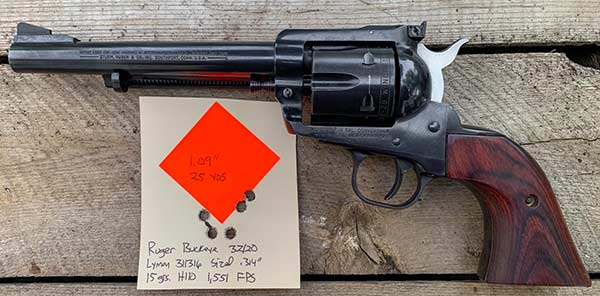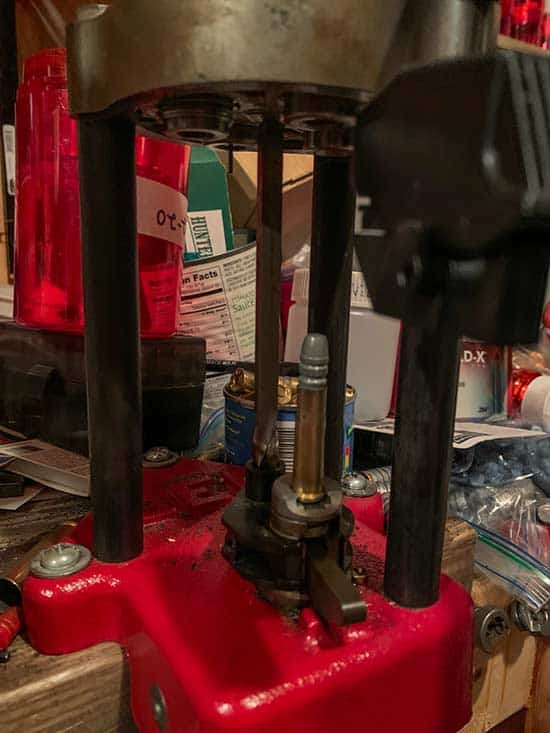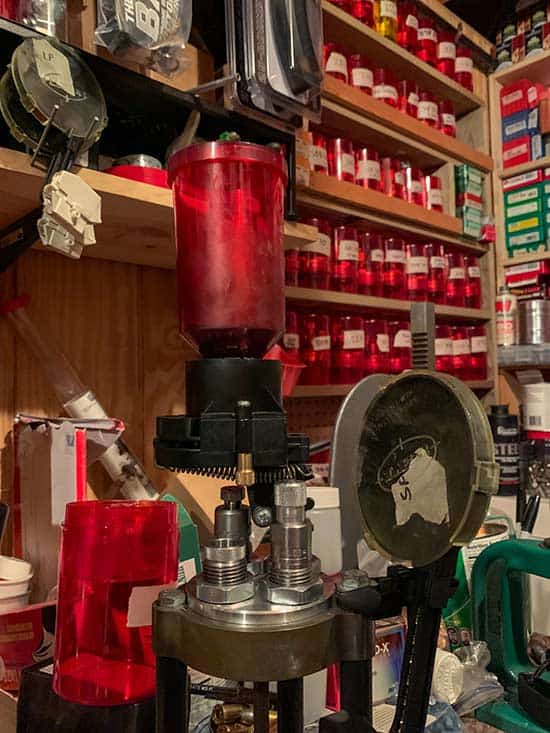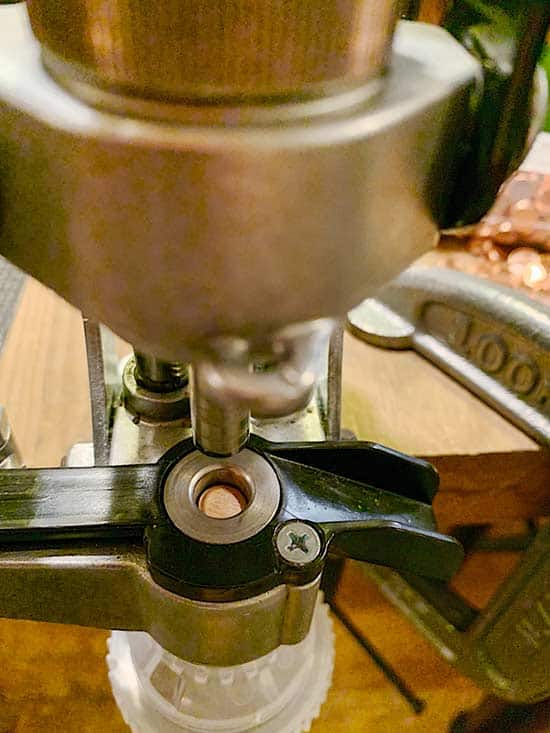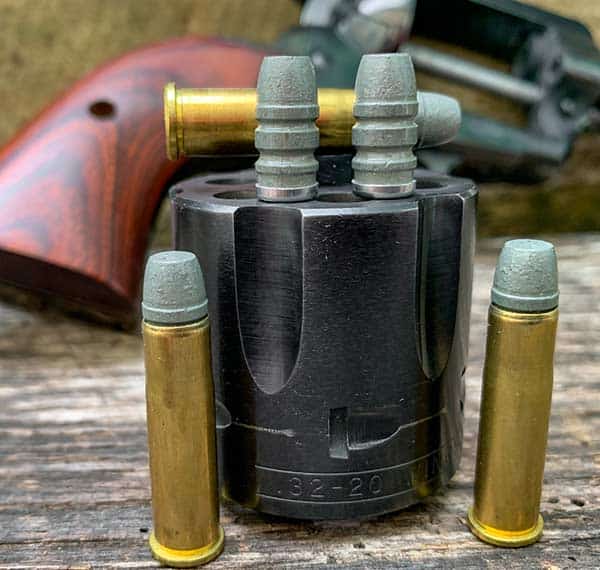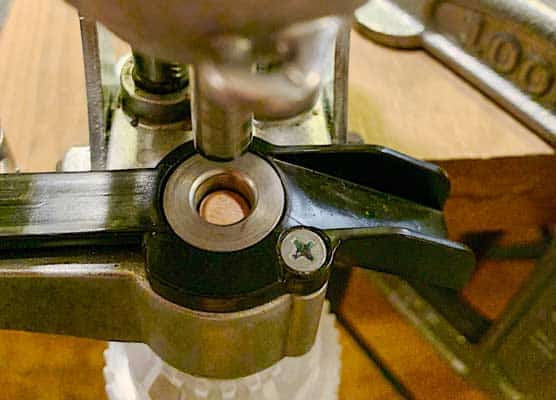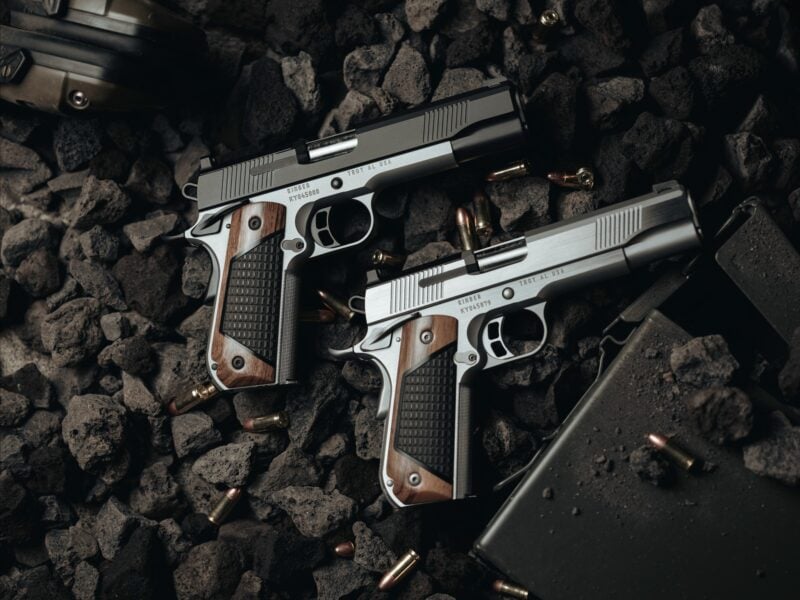The Very Versatile Lyman 311316
In 1988, Buckeye Sports convinced Sturm, Ruger & Co. to make a run of 5,000 Buckeye Specials. The calibers were split between the .38 WCF/10mm and .32 WCF/.32 H&R Magnum. It’s the smallbore .32 caliber we’ll be talking about, specifically the .32 WCF, or, as it’s known by its other name, the .32-20.
I was gifted a Buckeye .32/20 about 12 years ago by friend Chuck Smith. The gun had a Bowen rear sight and Belt Mountain #5 base pin. I reciprocated, giving Chuck my stainless Ruger Super Blackhawk with a 10″ barrel, which he later named Lucille.
The gun I received had the .32-20 cylinder, but suited me fine, for the old hyphenated smallbore cartridge can be loaded very hot, particularly in the full-size Ruger Blackhawk. Velocities approaching 1,700 FPS are possible in the 6.5″ full-size Blackhawk. Cylinder chambers are surrounded by plenty of metal. Always running on a shoestring budget, cast bullets were the way to go, keeping handloads affordable for a skinflint like me.
The classic .32-20 cast bullet is Lyman 311008. It’s of radiused flat-nose design, weighing 115 grains, and it’s a good one. But being plain based, velocities must be kept down to 1,300-1,400 FPS, or the barrel will lead, depending on your alloy, lube and barrel condition. Go much faster, and leading becomes an issue. Here’s where the Lyman 311316 shines. By having a gas check, much higher velocities are possible without leading.
One of my favorite loads uses this slug, which is polymer powder-coated and then gas-checked. Even after shooting 50+ handloads, a barrel check reveals just a hint of powder residue and no leading whatsoever. It’s nice being able to shoot full-house cast bullet loads and have a lead-free barrel afterwards.
Good Manners?
The .32/20 is often called the gentleman’s caliber for its easy recoil. But be forewarned, while recoil is in the pussycat category, the old .32/20 roars like a lion when shot due to having a large powder capacity for a .32 caliber cartridge. It fits into the “overbore” category of cartridges. Skeeter Skelton once remarked there’s a reason why most .32-20 Colts had cracked or chipped stocks on them.
When a shooter shoots his gun for the first time, he usually drops it, covering his ears from the ensuing searing pain. I think the phrase ear-splitting came about from this very thing, shooting a .32-20 sixgun without hearing protection.
Besides its raucous muzzle blast, the .32-20 has little to no recoil and is usually quite accurate.
Getting Loaded
Handloading the .32-20 is a snap. I laugh at myself for avoiding the bottlenecked cartridges for lack of carbide dies. But curiosity getting the better of me, and a gifted gun to boot, I had no choice if I wanted to shoot it a lot. Using LEE dies, I lightly lubed my brass and sent them up the sizing/de-priming die. So far, so good.
For lubing, I simply put a drop of RCBS lube on my left index finger and mix it around with my thumb. I pick up a case and give it a twirl between my lubed fingers. That’s all it takes. One drop lubricates 10-12 cases. On the down stroke of the LEE Classic Turret press, a primer is seated.
Next comes the charging and flaring of the brass with the LEE charging die. I have a LEE Auto-Disc powder dispenser screwed into the charging die for fast powder drop. Some complain of the accuracy of the Auto-Disc system, but I’ve never had a problem. Just make sure the flat edge of the hopper is facing towards the drop tube hole. I get very consistent charges. Those that don’t usually have the hopper on backwards.
The die is adjusted to flare the cartridge mouth the proper amount. The next pull rotates the turret top for bullet seating. After placing my Lyman 311316 slug into the case, it’s rammed home to the proper depth. In the last stage, I use the LEE Factory crimp die to form a perfect crimp on the finished cartridge.
Size Matters
When I first shot my Buckeye Sports .32-20, accuracy was dismal. Measuring the cylinder throats showed them to be .310-.311″, which is undersized for the .32-20. I polished the throats so a .314″ pin gauge could enter. This tightened groups immensely, with sub-1″ groups obtainable if I can do my part, and with sandbag rest, of course.
I admit it’s getting more challenging these days with blended tri-focal glasses. Finding the correct focal plane takes me a second or two, now. With throats polished to .314″, my bullets are sized the same. I use the LEE APP press for this chore, as it’s easy, economical, and makes seating gas checks a breeze. Just drop your unsized slug in the tapered sizing die nose first, place the gas check on top of the gas check shank and send it.
The bullet drops, and your gas check is crimped tighter than a bottle cap. My thumbs and fingers greatly enjoy this feature of applying gas checks.
Versatile Slug
The Lyman 311316 is a very handy and versatile cast slug. Originally made for the hotly loaded .32-20, it serves duty for several other cartridges, including .30 Carbine, .32 Long, .32 H&R, and .327 Federal. For rifles, the .300 BLK and .300 HAM’R come to mind, as well as the grand old .30 WCF, more commonly known as the .30-30.
Being a lead alloy slug, the 311316 can easily be sized down to .310, or .311″ for mild to wild plinking and hunting loads. I believe the 311316 is the first gas-checked bullet Lyman ever offered.
My slugs weigh 118 grains with gas check and polymer powder coat applied. The 311316 makes a dandy slug for the field, in either sixgun, or rifle. It’s capable of taking deer-sized game in savvy hands, besides performing varmint, pest, and rodent duties.

